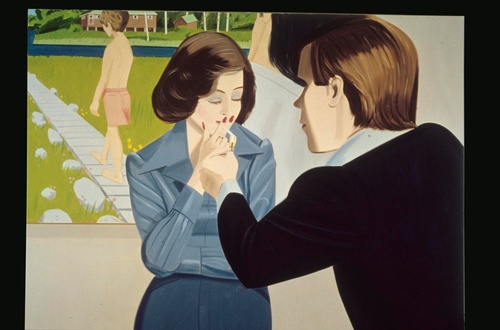Alex Katz
Alex Katz

Roles in Archive: Artist
210 East 6th Street Time on the Bowery: 1950 - 1953;
While it resists classification, the art of Alex Katz (b. 1927) combines the twin streams of abstraction and of realism found in post-World War II American art. In his work are joined several of the most persistent concerns of American art – the Abstract Expressionist insistence on space and the Pop strain of borrowing from popular culture. Alex Katz has been a representational painter from the outset of his career in the early fifties. In his work modern images are rendered in an idyllic and simplified world. Emphasis is on skin-deep surfaces. “I like life to be pleasant and simple.” (Alex Katz, Village Voice, March 15, 1976). Although his paintings are big, bold and relatively arranged, Katz is not a Pop artists because he does not use the images or the techniques of commercial art and popular culture. Although his paintings depict actual persons and places, he is not a realist for the visual information he depicts is relatively generalized rather than dense and particularized. The space of his paintings is more like that of abstract art. The size of his paintings seems to imply heroic or dramatic subject matter, but his subject matter is always ordinary life.